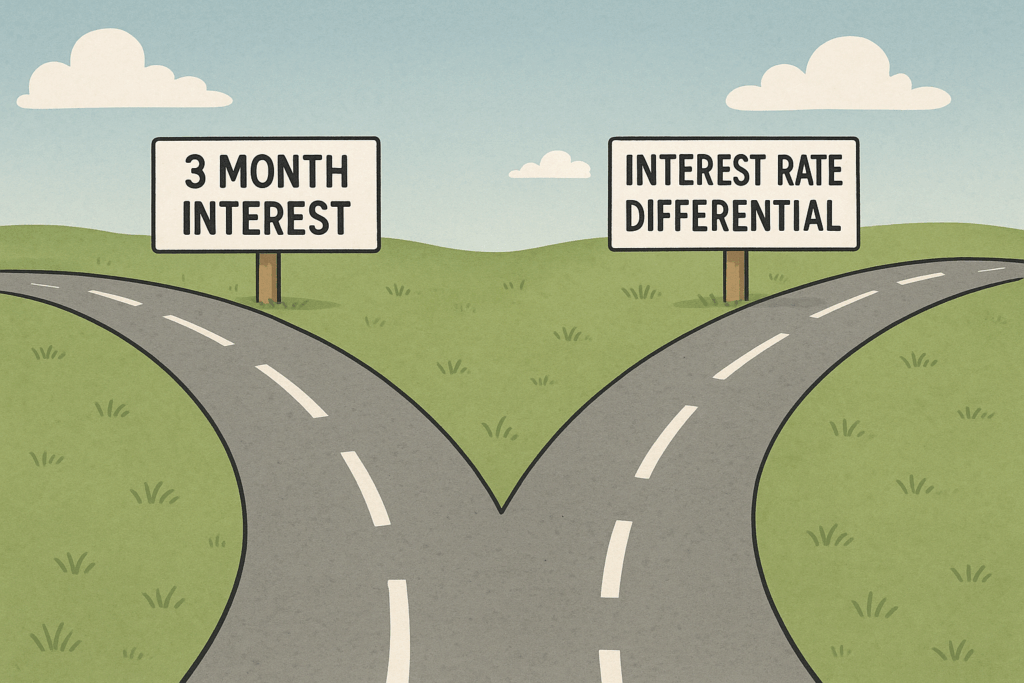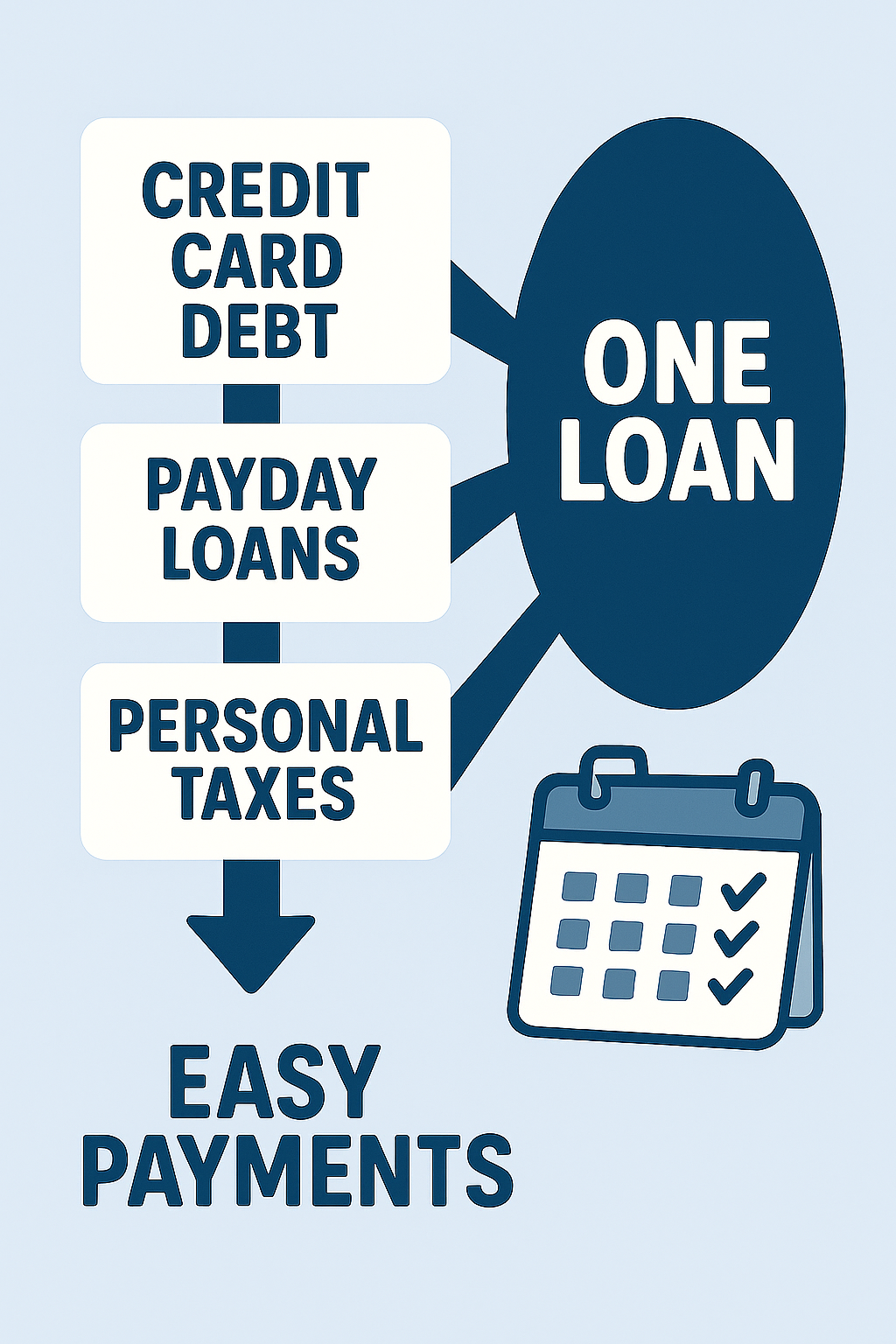Table of Contents
ToggleUnderstanding Your Mortgage Penalty in Canada
A deeper look into mortgage penalties, how mortgage penalties are calculated, and how you may be able to reduce them.
When you take out a mortgage in Canada, you expect to pay back the loan plus interest. But what happens if you need to refinance, sell your home, or pay off the mortgage early? That’s when mortgage penalties come into play.
In this article, we’ll explain:
-
How mortgage penalties are calculated.
-
The difference between the interest rate differential (IRD) and a 3-month interest penalty.
-
Real-life case studies comparing both methods.
-
Common penalty amounts among lenders.
-
Practical ways to reduce a mortgage penalty in Canada.
Also see our related guide: Mortgage Renewal Options for Homeowners with Bad Credit
Why Do Mortgage Penalties Exist?
Mortgage lenders make money from interest. When you break a mortgage contract before the term is complete, the lender loses out on that expected interest. To recover some of this lost income, they charge a prepayment penalty.
These penalties discourage borrowers from breaking contracts too frequently and protect lenders’ profits. However, not all lenders calculate penalties the same way — which makes it critical to understand your contract.
Types of Mortgage Penalties in Canada
1. Interest Rate Differential (IRD)
An IRD penalty is common with fixed-rate mortgages from banks, credit unions, and monoline lenders. It compares the interest rate on your existing mortgage with current market rates.
Formula (simplified):
Outstanding balance × (your rate – current rate) ÷ 12 × months remaining
Because of this formula, IRD penalties can often be much larger than a 3-month interest penalty.
2. Three-Months’ Interest Penalty
Variable-rate mortgages almost always come with a 3-month interest penalty. This is straightforward: you pay the equivalent of three months of interest on your outstanding balance.
For example, on a $300,000 mortgage at 3%, the penalty is:
$300,000 × 3% ÷ 12 × 3 = $2,250
Case Study 1: $300,000 Mortgage at 2.5%
Let’s compare an IRD penalty vs. a 3-month interest penalty.
Scenario:
-
Mortgage balance: $300,000
-
Contract rate: 2.5% fixed
-
Current market rate: 1.5%
-
Term left: 24 months
IRD Calculation:
$300,000 × (2.5% – 1.5%) ÷ 12 × 24 = $6,000
3-Month Interest Calculation:
$300,000 × 2.5% ÷ 12 × 3 = $1,875
Key Takeaway: IRD vs. 3-Month Interest
Before you break your mortgage, ask your lender to provide both penalty calculations in writing.
- Common on fixed-rate mortgages (banks, credit unions, monolines).
- Often costs more than 3 months’ interest.
- Based on rate difference × balance × time remaining.
- Typical for variable-rate mortgages.
- Simpler and usually lower than IRD.
- Calculated as balance × rate ÷ 12 × 3.
Case Study 2: Porting a Mortgage When Buying a New Home
Imagine you’re buying a new home and need a larger mortgage. Breaking your existing contract could result in a significant mortgage penalty.
Instead, your mortgage professional suggests porting your existing mortgage to the new property. By transferring the contract instead of breaking it, you avoid triggering a penalty. The lender may simply “blend and extend” your current mortgage rate with a new one to cover the higher loan amount.
💡 Disclaimer: In this example, the borrower’s current mortgage contract contains a porting clause/feature.
Typical Mortgage Penalty Amounts by Lender
| Lender Type | Penalty Structure |
|---|---|
| Private Lenders | Typically 3–6 months’ interest. Always review your commitment carefully. |
| Banks & Credit Unions | Greater of 3 months’ interest OR IRD. |
| Monoline Lenders | Same as banks: greater of 3 months’ interest OR IRD. |
| Variable Mortgages | Generally 3 months’ interest regardless of institution. |
💡 Tip: Always ask your lender to provide a written penalty calculation before breaking your mortgage.

How Mortgage Penalties Are Calculated
Mortgage penalties depend on:
-
Your interest rate (contract vs. market).
-
Your outstanding balance.
-
The time left in your term.
-
Whether you are on a fixed or variable rate.
-
Your lender type (bank, credit union, monoline, private lender).
Because every contract is different, it’s essential to carefully read the prepayment, payout, discharge, and porting clauses in your mortgage agreement.
Mortgage Prepayments: How To Utilize Them
A mortgage prepayment is an extra payment you make toward your mortgage balance, outside of your regular monthly or bi-weekly payments. Prepayments go directly to the principal, which reduces the total amount of interest you’ll pay over the life of your mortgage.
What Is a Prepayment?
A prepayment can be:
-
A lump-sum payment made once or multiple times a year.
-
An increase to your regular payment amount (for example, paying $1,200/month instead of $1,000).
-
An extra payment made on your regular payment date, sometimes called a double-up option.
Lenders That Offer Prepayments
Most Canadian banks, credit unions, and monoline lenders offer prepayment privileges. The amount allowed varies:
-
Many allow 10% to 20% of the original principal each year.
-
Some offer only annual lump-sum privileges, while others allow you to increase your ongoing payments as well.
-
Private lenders generally do not offer prepayment privileges — penalties are stricter, and early repayment flexibility is rare.
When Can Prepayments Be Applied?
-
Usually on your mortgage anniversary date or at any time (depending on the lender).
-
Lump sums can often be made once per year without penalty.
-
Payment increases can usually be applied monthly or bi-weekly.
How Prepayments Reduce Mortgage Penalties
Prepayments can play a big role in lowering a potential penalty if you’re considering breaking your mortgage:
-
By reducing your outstanding balance before breaking the contract, the penalty (whether IRD or 3 months’ interest) will be calculated on a smaller number.
-
For example:
-
Outstanding balance: $300,000
-
Prepayment made: $20,000
-
New balance: $280,000
-
A 3-month interest penalty at 3% drops from $2,250 to $2,100, and an IRD penalty would shrink proportionally as well.
-
💡 Tip: If you’re planning to refinance or break your mortgage, ask your lender if you can apply your prepayment privilege first. Even a small reduction in balance can trim hundreds — or thousands — off your penalty.
Should You Break Your Mortgage?
Breaking a mortgage is rarely a simple “yes” or “no.” It can save you thousands of dollars — but it can also cost you more than you expected if the penalty outweighs the potential savings. This is why it’s one of the most important financial decisions a homeowner will make during their mortgage term.
Here are the key factors to weigh before deciding:
1. Calculate Your Future Interest Savings
The first step is to compare the interest you would save by moving to a lower rate with the penalty you’ll pay today.
-
If the penalty is $8,000 but switching to a new rate will save you $12,000 over the remaining term, you come out ahead.
-
If the penalty is $8,000 but your savings are only $4,000, it doesn’t make sense to break the mortgage.
💡 Always request a written payout statement from your lender so you can see the penalty calculation in black and white.
2. Consider Your Cash Flow and Financial Security
A lower mortgage rate may free up hundreds of dollars in monthly payments — money that can be redirected to:
-
Building an emergency fund.
-
Paying down high-interest credit card debt.
-
Boosting your retirement savings.
On the other hand, if paying the penalty leaves you cash-strapped, you may be creating more stress than savings.
3. Think Beyond the Numbers
Breaking your mortgage isn’t just about math — it’s also about timing and personal goals:
-
Are you selling your home soon? If so, penalty avoidance strategies like porting may be more important.
-
Do you plan to refinance for renovations, debt consolidation, or investment purposes? Breaking your mortgage may free up equity.
-
Is your current mortgage flexible (with prepayment or porting options)? Flexibility may save you from a penalty altogether.
4. Long-Term Outlook
Mortgage penalties are a short-term cost, but your decision should fit into your long-term financial strategy. Ask yourself:
-
Will this move help me become mortgage-free faster?
-
Will it improve my overall debt position?
-
Does it align with my retirement and investment goals?
Bottom line: Homeowners should only break a mortgage if the total savings outweigh the penalty, both financially and strategically. Speaking with a mortgage professional is critical — they can run the numbers, explore porting or refinancing options, and help you avoid costly mistakes.
FAQ: Mortgage Penalties in Canada
1. How to reduce a mortgage penalty in Canada?
Use prepayment privileges, port your mortgage if possible, time your payout close to renewal, or negotiate with your lender.
2. Can I avoid a mortgage penalty if I sell my home?
Not always. If your mortgage has a porting option, you may be able to transfer it to your new property instead of paying the penalty.
3. Do private lenders charge mortgage penalties?
Yes, but usually simpler. Most private lenders charge 3–6 months’ interest, which is easier to calculate than IRD penalties.
4. Why are IRD penalties so expensive?
They account for the lender’s loss of future interest. Since the formula considers your remaining term and interest rate difference, the numbers add up quickly.
5. Is it worth breaking a mortgage to refinance at a lower rate?
It depends. If your interest savings over the new term are greater than the penalty, refinancing can make sense. Always compare both.
Learn more: Talk to a Mortgage Professional
It’s important to consult your mortgage lender or mortgage professional to better understand your mortgage penalty. Whether you’re refinancing, porting your mortgage, or purchasing a new home, there are solutions you can explore.
- Hard Money Lenders in Ontario: A Comprehensive Guide for 2025 - November 25, 2025
- Skip a Mortgage Payment? Here’s What Canadian Homeowners Should Know - September 26, 2025
- Using Equity Without Refinancing Safely Borrow in Canada: 3 Key Ways - September 18, 2025






